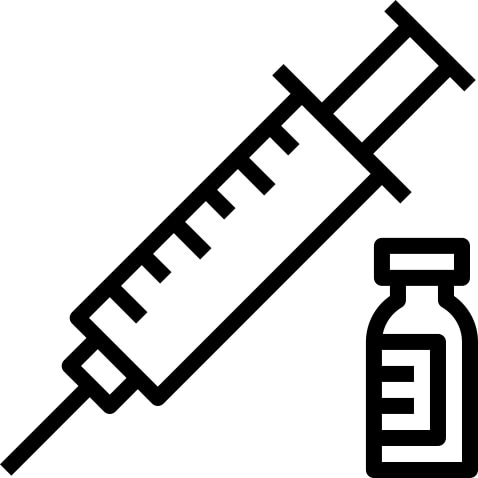DIPHTHERIA ANTITOXIN, equine purif., 10.000IU/10ml, vial+dil
Valid Article
DIPHTHERIA ANTITOXIN, equine purified - NST
With the increased use of the vaccine and the decline in the incidence of the disease, the supply of DAT has become increasingly complex. Most countries no longer produce the serum, and obtaining stocks and controlling quality is a worldwide concern. It has been unavailable in many countries, including in Europe, since 2008.
Full Name
Diphtheria Anti-Toxin (DAT)
Therapeutic Action
Enzyme refined equine immunoglobulins.
Diphtheria antitoxin neutralises the free-circulating toxin before it can irreversibly bind to tissues and cause organ damage.
Its effectiveness, therefore, decreases as more time elapses since the onset of symptoms.
Indications
Treatment of diphtheria during an outbreak in patients meeting the diphtheria "suspect case" definition, including pregnant and breastfeeding women, in combination with antibiotic treatment.
Not recommended for the prevention of diphtheria, as the protective effect of diphtheria antitoxin lasts only 1 to 2 weeks.
Instructions for use
Each vial contains 10,0000 IU equivalent to 1,000IU/ml
Two presentations are available:
- liquid vial (DVACADIP1V-)
- powder vial (DVACADIP1VD) to be reconstituted with the diluent supplied.
Must be given by IV infusion in 0.9% NaCl, as early as possible, as a single dose.
Dosage (same for adults and children) depends on the severity and duration of the disease.
Start treatment with IV/PO antibiotics (azithromycin or erythromycin) simultaneously with diphtheria antitoxin as soon as diphtheria is clinically suspected (pseudomembranous pharyngitis) in order to eliminate bacteria and toxin production, prevent further transmission and limit carriage, which may persist even after clinical recovery.
Due to the risk of allergic reactions, systematically administer antihistamines and corticoids as premedication.
Treatment should include isolation precautions to prevent disease spread.
After recovery, initiate or complete vaccination (tetanus-diphtheria vaccine).
Monitor close contacts for signs and symptoms for 10 days from the date of last contact with a suspected case. Administer antibiotic prophylaxis to close contacts for 7 days.
Precautions for Use
As DAT is from equine origin, there is a risk of:
- rare but severe anaphylactic reaction. Administer only under close monitoring by trained staff, in hospital settings with immediate availability of airway management and treatment (epinephrine, salbutamol, antihistamine, corticosteroid, Ringer lactate).
- serum sickness weeks after administration. Ensure clinical follow-up.
Divided doses are not recommended as this increases the risk of sensitivity reactions. If, under exceptional circumstances, the full dose cannot be admministered in a single administration (e.g., in a small child), the maximum interval between the two split doses should not exceed 24 hours.
Storage
- Liquid vial (DVACADIP1V-): keep refrigerated between 2ºC and 8ºC - Protect from sunlight
- Powder vial (DVACADIP1VD): below 25ºC (does not require cold chain)
- Do not freeze.
Description updated and validated by Spinco and Vaccination WG on 28/02/2024.



![[DVACADIP1V-] DIPHTHERIA ANTITOXIN, equine purified, 10.000IU/10ml, vial](/web/image/product.template/581043/image_256/%5BDVACADIP1V-%5D%20DIPHTHERIA%20ANTITOXIN%2C%20equine%20purified%2C%2010.000IU-10ml%2C%20vial?unique=385d5c6)
![[DVACVDTB1VD] VACCINE Td (tetanus/diphtheria booster) 1 dose, multid. vial](/web/image/product.template/568870/image_256/%5BDVACVDTB1VD%5D%20VACCINE%20Td%20%28tetanus-diphtheria%20booster%29%201%20dose%2C%20multid.%20vial?unique=d71be30)